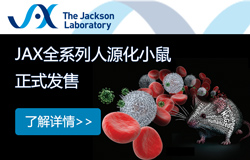通過NMT檢測離子流揭示中國南瓜與印度南瓜的耐鹽策略
2018年7月,華中農大園藝林學學院別之龍教授團隊關于不同遺傳背景南瓜材料耐鹽性策略差異的研究成果在Journal of Experimental Botany上發表題為An early ABA-induced stomatal closure, Na+ sequestration in leaf vein and K+ retention in mesophyll confer salt tissue tolerance in Cucurbita species的研究成果。牛蒙亮、陳晨、謝俊俊為本文共同第一作者,別之龍、黃遠為并列通訊作者。
葫蘆科中南瓜具有較強的耐鹽性,在瓜類嫁接中廣泛用作黃瓜、西瓜等鹽敏感材料的砧木,具有較強的限制Na+等鹽害離子向地上部運轉的能力,其中生產中的南瓜砧木多為中印南瓜雜合體(Cucurbita maxima × Cucurbita moschata)材料。
前期研究發現,中國南瓜(Cucurbita moschata)和印度南瓜(Cucurbita maxima)二者具有顯著差異的Na+積累模式與耐鹽能力(A shoot based Na+ tolerance mechanism observed in pumpkin—An important consideration for screening salt tolerant rootstocks. 2017, Scientia Horticulturae, 218:38-47.),某些特殊的南瓜材料在維持葉片中高Na+含量的同時依然具有極強的耐鹽能力,這引起了研究者對這些材料耐鹽策略的興趣,其Na+轉運過程具有哪些不同尋常之處?
研究利用MIFE®(非損傷微測技術的一種,澳大利亞塔斯馬尼亞大學SergeyShabala教授提供),詳細對比了兩類南瓜材料在NaCl脅迫后根尖、葉脈、葉肉中Na+、K+等離子的流速情況相。結果發現,相比中國南瓜,印度南瓜在NaCl脅迫下向葉脈的皮層細胞和木質部薄壁組織中轉運更多的Na+避免其在葉肉中卸載。同時,鹽脅迫下印度南瓜在根系和葉肉中具有更低的K+外流趨勢,從而有效維持細胞內較高的K+/Na+比。

100 mM NaCl實時刺激下,葉肉細胞、葉脈、根系的K+流變化。負值表示外排,正值表示吸收。
該文章利用了非損傷微測技術比較了兩類嫁接生產中常見的砧木南瓜耐鹽性與Na+、K+轉運模式之間的聯系,是利用此類技術在植物根系、葉脈及葉肉中整合應用的代表。
截至2018年底,別之龍教授課題組已經利用非損傷微測技術發表3篇SCI文章,均為抗鹽研究,累計影響因子14.84。文章信息如下:
An early ABA-induced stomatal closure, Na+ sequestration in leaf vein and K+ retention in mesophyll confer salt tissue tolerance in Cucurbita species. Journal of Experimental Botany. 2018, 69(20):4945-4960.
Root respiratory burst oxidase homologue-dependent H2O2 production confers salt tolerance on a grafted cucumber by controlling Na+ exclusion and stomatal closure. Journal of Experimental Botany. 2018, 69(14):3465-3476.
Scanning ion-selective electrode technique and X-ray microanalysis provide direct evidence of contrasting Na+ transport ability from root to shoot in salt-sensitive cucumber and salt-tolerant pumpkin under NaCl stress. Physiologia Plantarum. 2014, 152(4):738-48.





